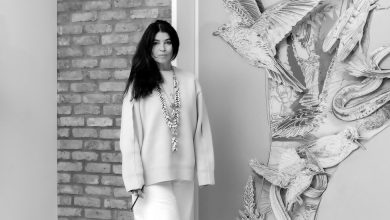Review: The Choreographer Kyle Marshall’s Spacious Slow Burns

Even before the pandemic forced people into solitude, the choreographer Kyle Marshall had been working on a solo. In February 2020 he shared a work-in-progress at Danspace Project, in which he was asking questions about his Jamaican heritage, his queerness and the relationship between them. I still recall the quiet, steady force of his running in loops around the St. Mark’s Church sanctuary, alongside the pulse of Bob Marley’s “Exodus.”
Two years later, that sketch has become “I & I,” the center of gravity on a triple bill that his company, Kyle Marshall Choreography, offered on Friday at the new Chelsea Factory in Manhattan. For its first public performances, this arts center — once home to the now-defunct Cedar Lake Contemporary Ballet — has partnered with the nearby Joyce Theater to present four dance programs over two weeks. (The first week also included Adriana Pierce’s #QueertheBallet; the second brings the tap dancer Luke Hickey and the Calpulli Mexican Dance Company.)
Marshall, who founded his company in 2014 and quickly began earning acclaim (while also performing with the Trisha Brown Dance Company), has talked about the space that the pandemic opened up for him: for rest, reflection and shifts in his creative process. He has been leaning into his Caribbean roots — his mother is Jamaican; he grew up in New Jersey — and into the celebratory aspects of Black dance and music traditions. Bookending “I & I” were two recent small-group pieces: “Stellar,” a stage adaptation of a film he created last year, inspired by Afrofuturism and jazz improvisation; and “Rise,” which grounds itself in the ecstatic, interrelated energies of club music and the shout tradition of the Black church.
While Marshall’s breakthrough 2017 work, “Colored,” made an instant, indelible impact, the pieces on this program felt more spacious, sprawling, exploratory, slow burns rather than immediate knockouts — not long-winded, just taking their time.
Perhaps because it’s been easier for the past two years to rehearse alone than in groups, the subdued yet powerful “I & I,” to a selection of reggae songs (by the Congos, Dawn Penn and Bob Marley and the Wailers), seemed most fully realized. After setting the stage with fabric in the colors of the Rastafarian flag — green on the floor; red and gold draped over two chairs — Marshall takes a seat in the gentle glow of Itohan Edoloyi’s lighting. Before any music revs up, we hear lapping waves and the hum of an electric fan that animates the fabric.
Dressed in slacks, a tank top and a button-down shirt that he eventually sheds — wrapping himself instead in those bright hues — Marshall eases his way through poses and gestures that suggest, by turns, captivity and freedom, toughness and letting go. Fists crossed above his head evolve into languid, undulating arms; a flexed bicep gets swiped away by the other hand. One moment he’s stoically reclining, the next twirling his hair or circling his hips.
In what could be a nod to his parents, both of whom were athletes, he springs from a crouch into an extended jog around the space. The songs he has chosen are largely about liberation, a return to the promised land, and with its light touch, this work seems to reflect a personal journey as much as a collective one. Moments of stillness, in particular, pop, as when he pauses to stare at the audience on the line (from “Exodus”): “Are you satisfied with the life you’re living?” It reads as a provocation for us and a query for himself.
In “Stellar,” which opened the program, Marshall is joined by the dancers Bree Breeden and Ariana Speight, along with the sound designer Dial Winfield, who conjures up a sometimes piercing electronic score mixed with softer notes of trumpet, bells and tambourine. Wearing painted sweatpants and shirts by Malcolm-x Betts — dynamic canvases strewn with glow-in-the-dark accents — the three drift between improvised and set material. Gradually the structure, which begins with the dancers swaying off-balance and catching themselves, coheres around a shared stamping, clapping rhythm, before loosening again.
“Rise,” for the same cast plus José Lapaz-Rodriguez, appears to build on some of these ideas, while diving deeper into Afro-Caribbean forms. Here, Marshall is in conversation with Ronald K. Brown as much as with Trisha Brown. The sound designer Cal Fish, stationed at a corner of the stage, layers ethereal flute over a house-inspired beat that drives passages of buoyant, devotional movement. Heightening the warmth of the atmosphere are Russell Peguero’s flowing, white-yellow costumes and sumptuous red-gold makeup by Edo Tastic.
In both “Rise” and “Stellar,” the dancers seemed to be still settling into the movement, or perhaps into the refurbished space. More comfort and confidence might take time. But if the pandemic has offered any hopeful lesson, it’s that plenty of good can come from slowing down.
Kyle Marshall Choreography
April 8-9 at the Chelsea Factory, Manhattan.





